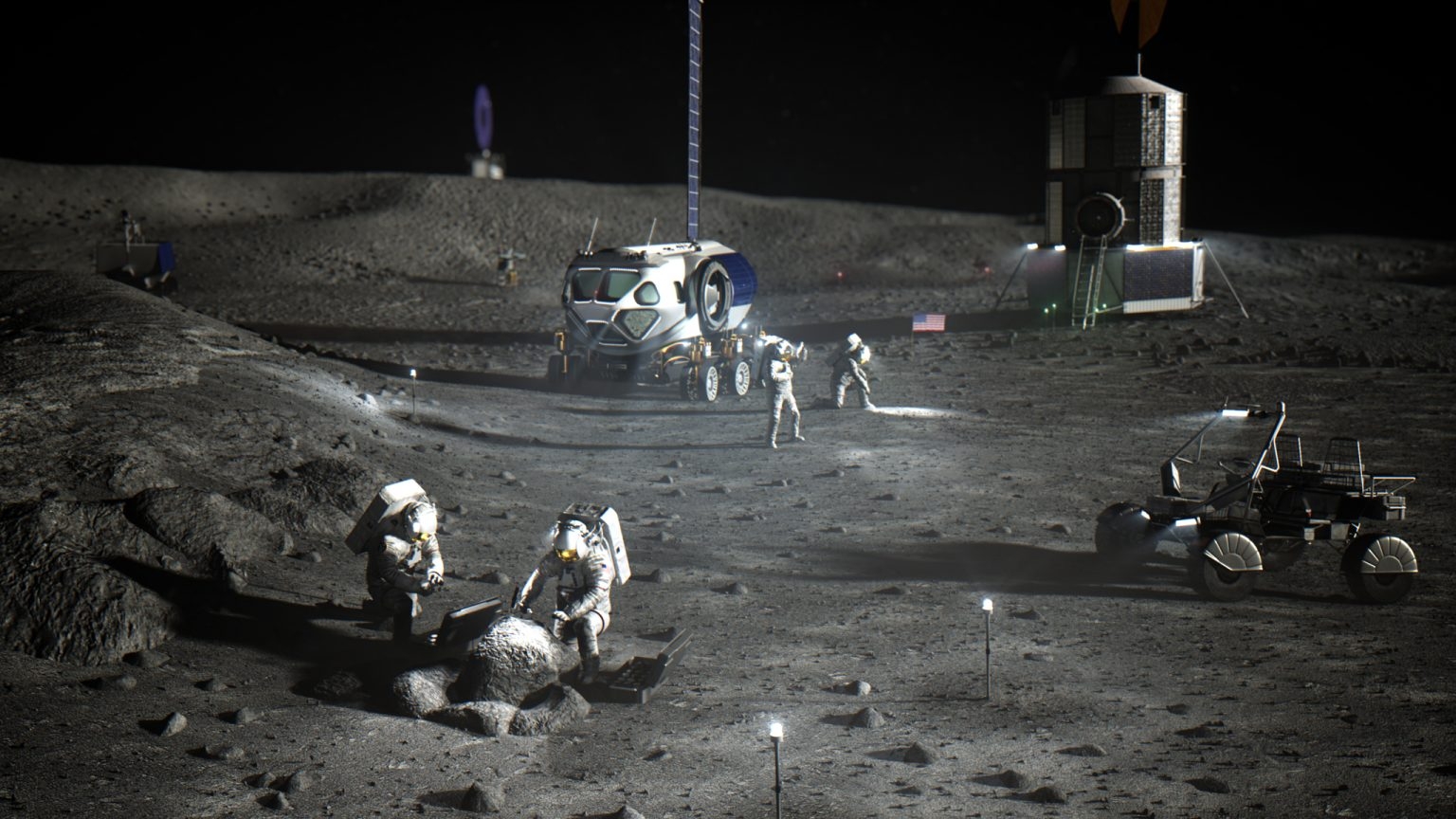Amazing photos of the last Blood Moon lunar eclipse of 2022 (gallery)
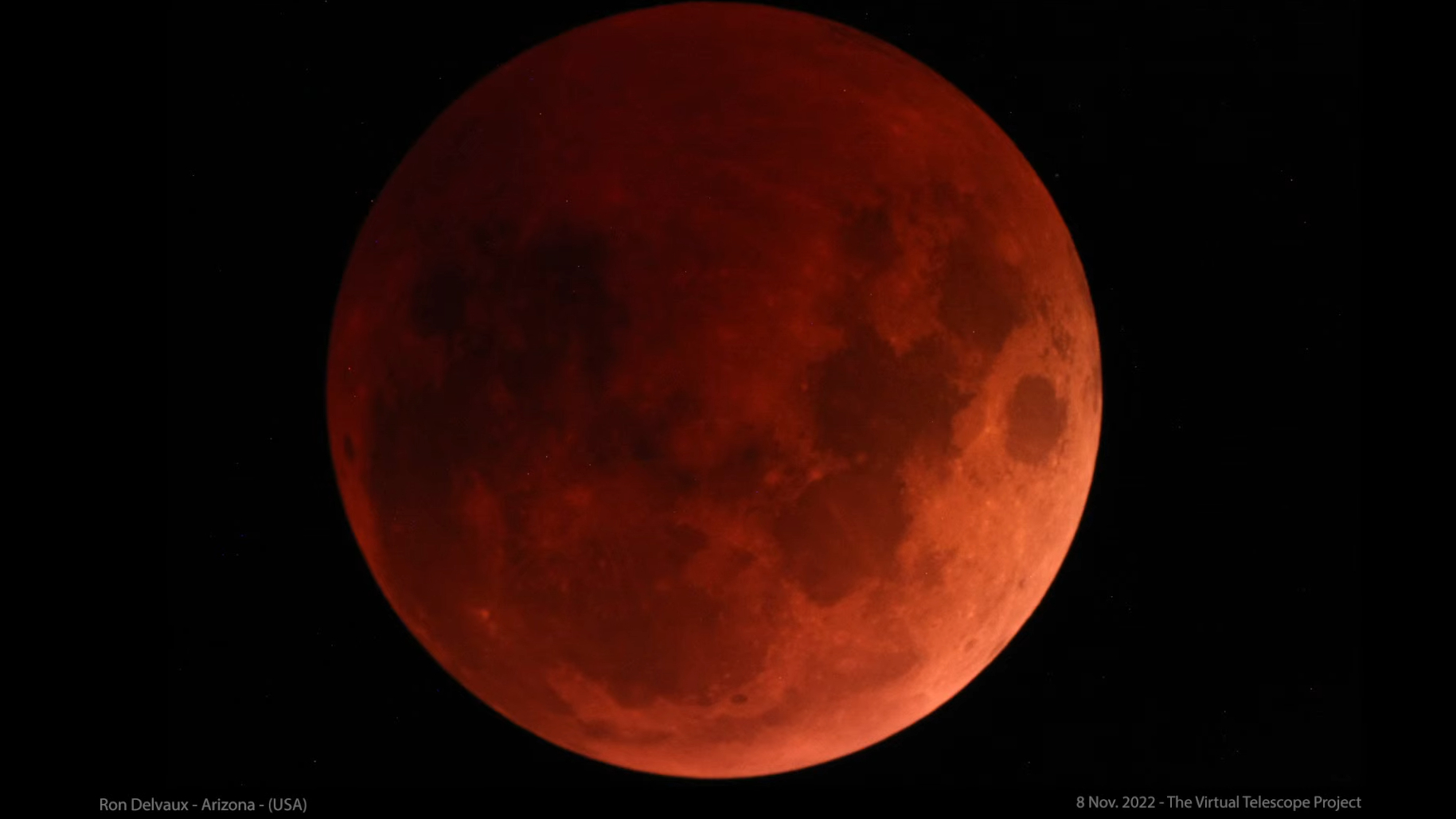
The moon passed through Earth's shadow in the final total lunar eclipse of 2022 on Nov. 8, 2022 and it was truly an amazing sight.
The so-called Beaver Blood Moon lunar eclipse turned the moon an eerie copper-red hue and was visible across North America and parts of Australia, Asia, the Pacific and South and Central America. It was the second and last lunar eclipse of 2022 and the last total lunar eclipse until 2025.
The Nov. 8 lunar eclipse occurred during the November full moon, also known as the Beaver Moon, giving it its animal nickname. Check out some amazing photos from around the world in our gallery here by clicking the arrows above.
The photo of the blood-red moon above was captured by observer Ron Delvaux in Arizona and provided to the Virtual Telescope Project during a livestream broadcast.
Related: Lunar eclipses 2022: When, where & how to see them
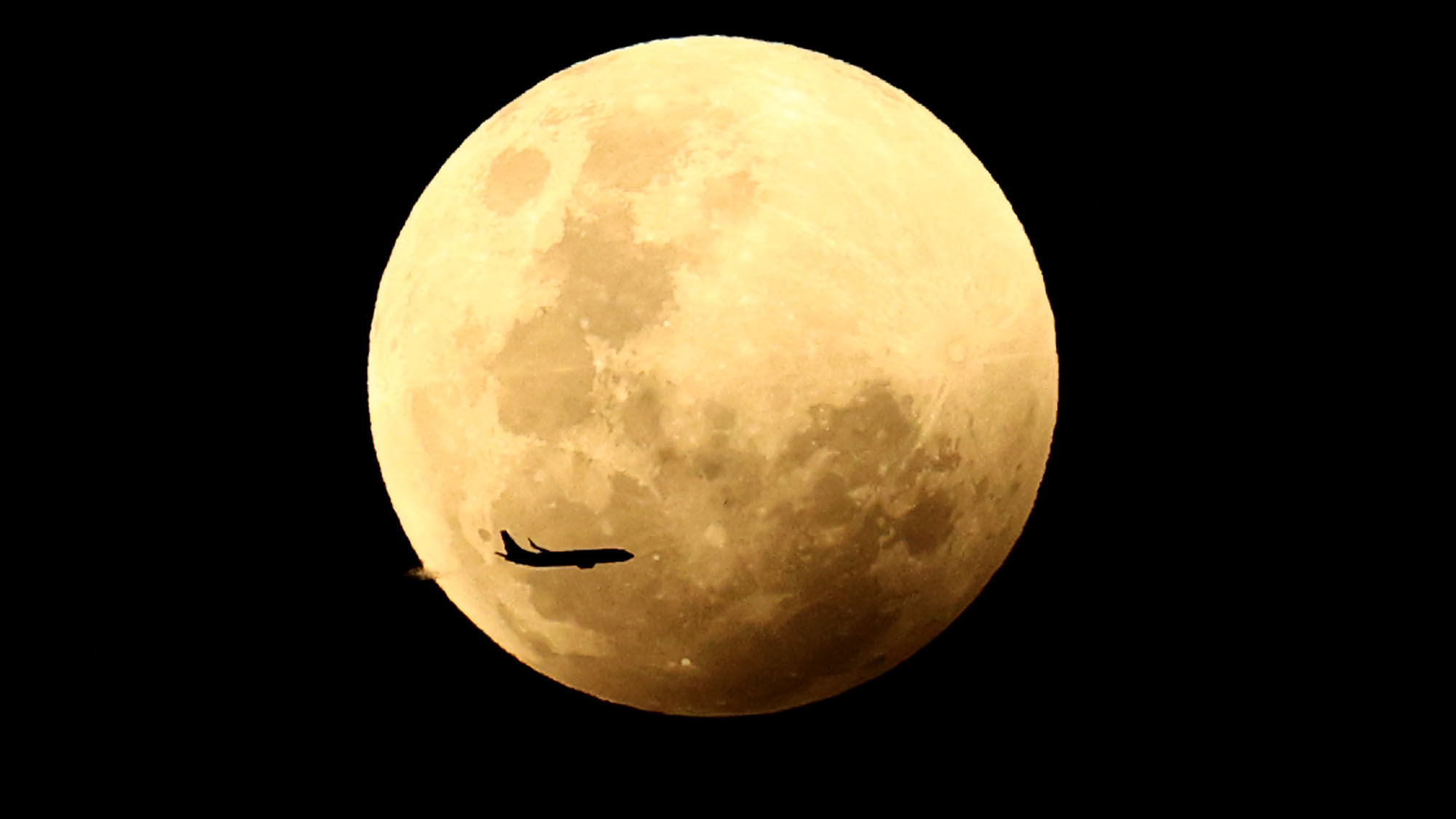
Photographer Matt Blyth of Getty Images captured this well-timed view of the Nov. 8 lunar eclipse just as an airplane was crossing the face of the moon.
Blyth took this image as the partial phase of the lunar eclipse was underway from Sydney, Australia. The eclipse was visible from across much of Australia and New Zealand, as well as parts of Asia, the Pacific, Central and South America and all of North America.
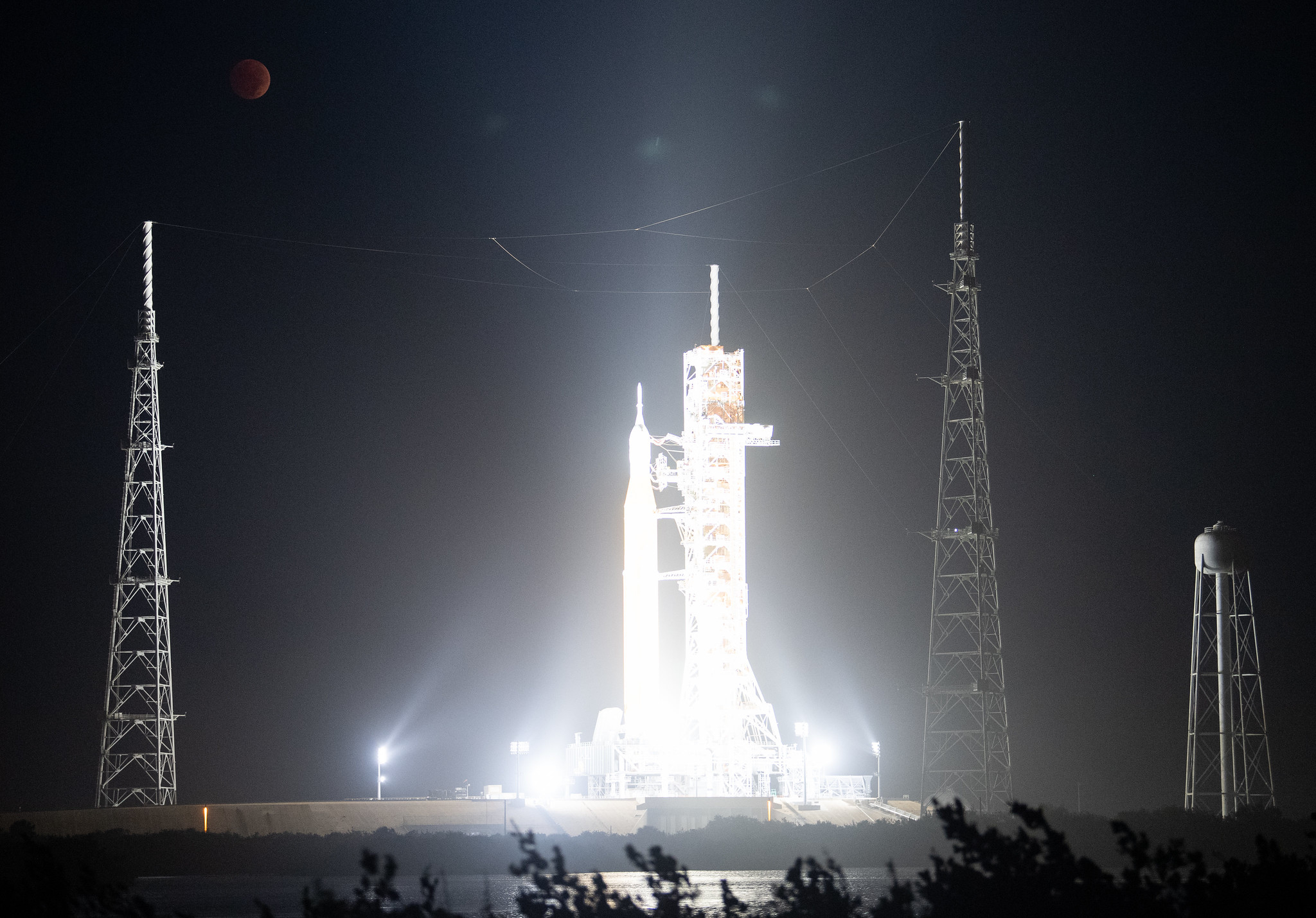
Blood Moon meets moon rocket
The Beaver Blood Moon occurred while NASA's Artemis 1 moon rocket was on the launch pad awaiting a trip to the moon in November 2022. At the time, the rocket was scheduled to launch on Nov. 14, less than a week after the total lunar eclipse.
Still, NASA photographer Joel Kowsky was able to snap a series of photos, including this one, of the giant Space Launch System megarocket with the blood moon even as a potential hurricane, the tropical storm Nicole, was closing in on the launch site. NASA even canceled a larger lunar eclipse photo session by media photographers due to the storm, according to Space.com contributor Josh Dinner.
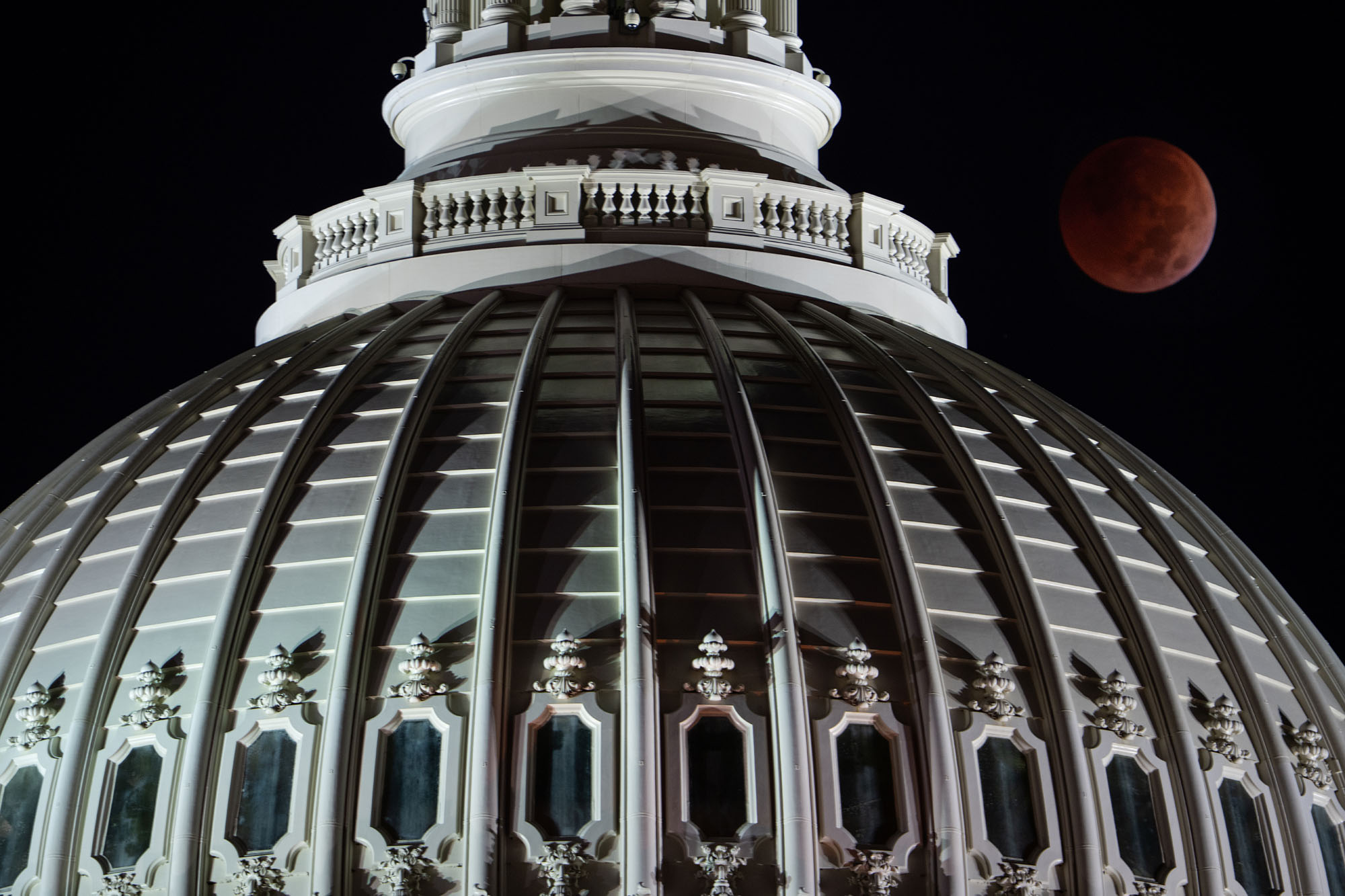
By sheer coincidence, the Nov. 8 total lunar eclipse occurred as Election Day was beginning in the United States.
The Beaver Blood Moon lunar eclipse was the first total lunar eclipse to occur during an Election Day, making it an early-morning treat for early-bird voters.
Here, photographer Bill Clark for CQ-Rol Call, Inc and Getty Images captures a view of the lunar eclipse behind the U.S. Capitol dome before dawn on Nov. 8 in Washington, D.C., the U.S. capitol city.
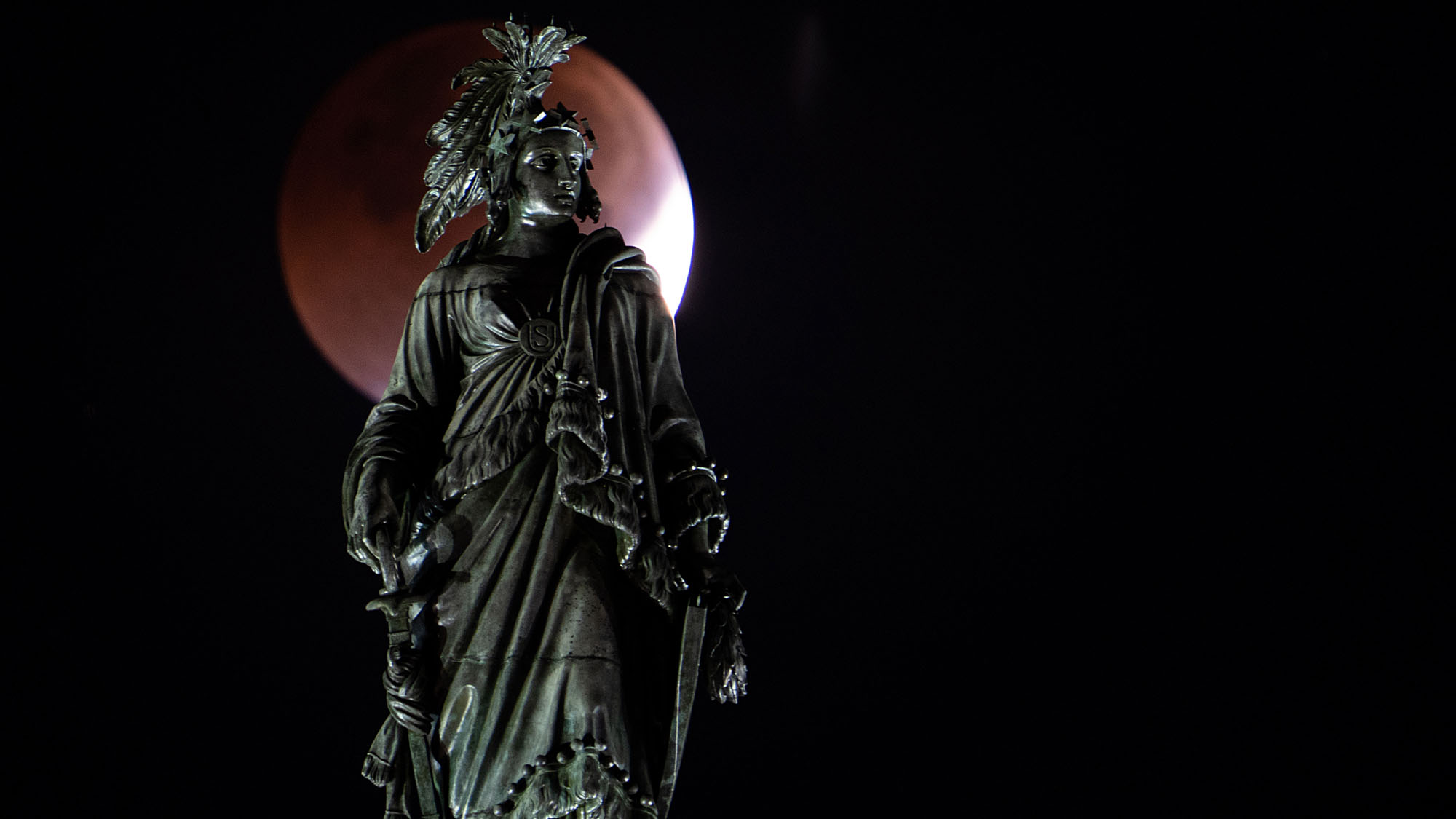
This second photo by Bill Clark for CQ-Rol Call, Inc and Getty Images shows the Beaver Blood Moon lunar eclipse as it shined red behind the Statue of Freedom on top of the U.S. Capitol Dome in Washington, D.C.
The total lunar eclipse was the first-ever to occur on a U.S. Election Day.
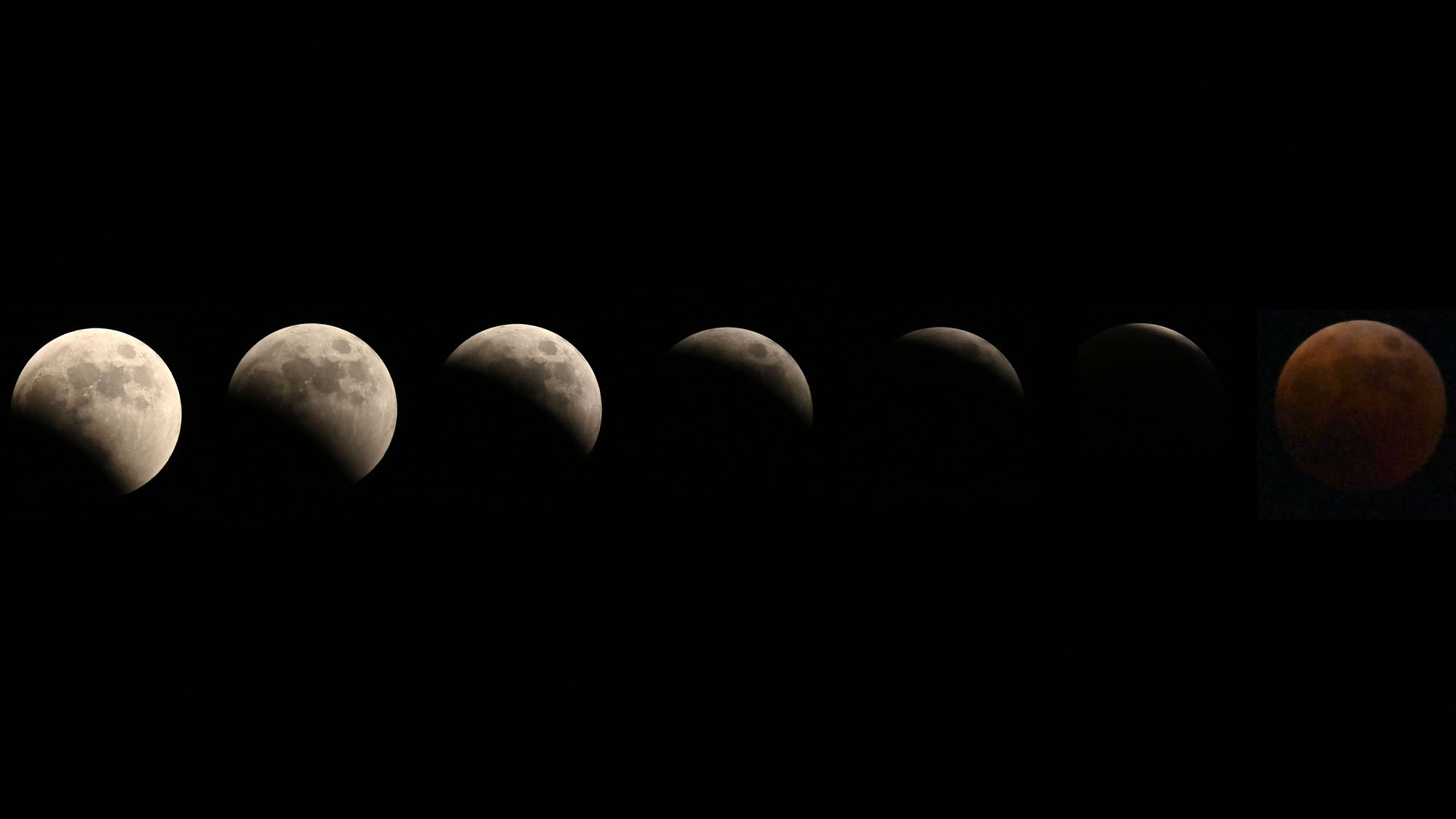
A total lunar eclipse is not a short affair. It occurs in stages.
This composite image by Richard Brookes of the AFP and Getty Images news services shows the evolution of the Nov. 8 lunar eclipse. First, the moon dipped into the outer edge of Earth's shadow, creating a partial eclipse that grew larger until the moon was fully immersed in Earth's shadow (right), creating the Blood Moon effect.
Brookes took these images from Tokyo, Japan.
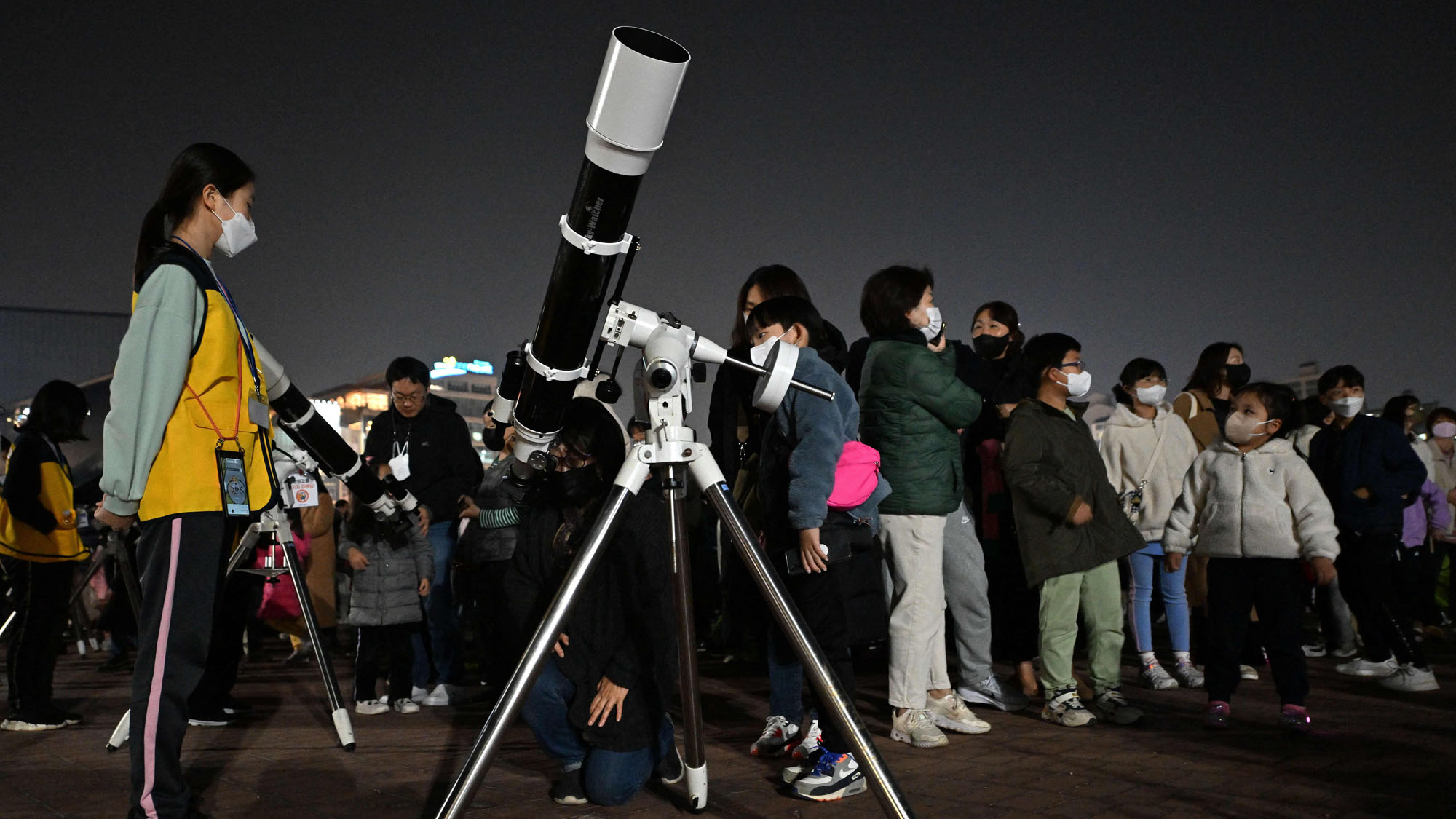
The Nov. 8 Blood Moon lunar eclipse was visible to potentially millions of stargazers around the world due to its wide visibility range.
This image, taken by Jung Yeon-Je of AFP and Getty Images, shows moon watchers in Goyang, northwest of Seoul, South Korea as they watch the lunar eclipse through telescopes.
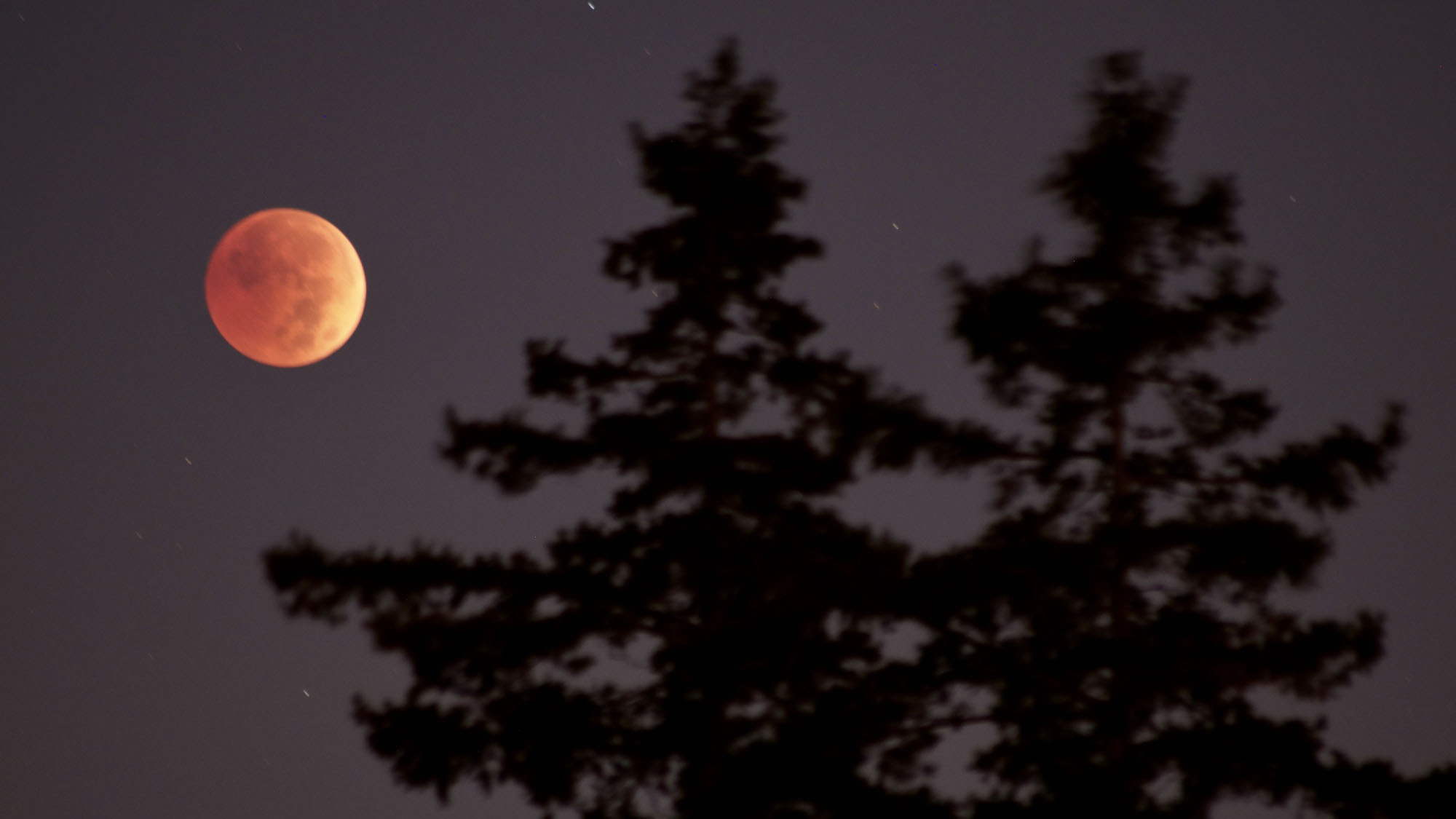
The Blood Moon lunar eclipse created picturesque views for some photographers.
This image taken by photographer Islam Dogru of the Anadolou Agency and Getty Images shows a view of the eclipse from New York City as the moon shined red with some trees in the foreground. A few stars are also visible in the background in the predawn view.
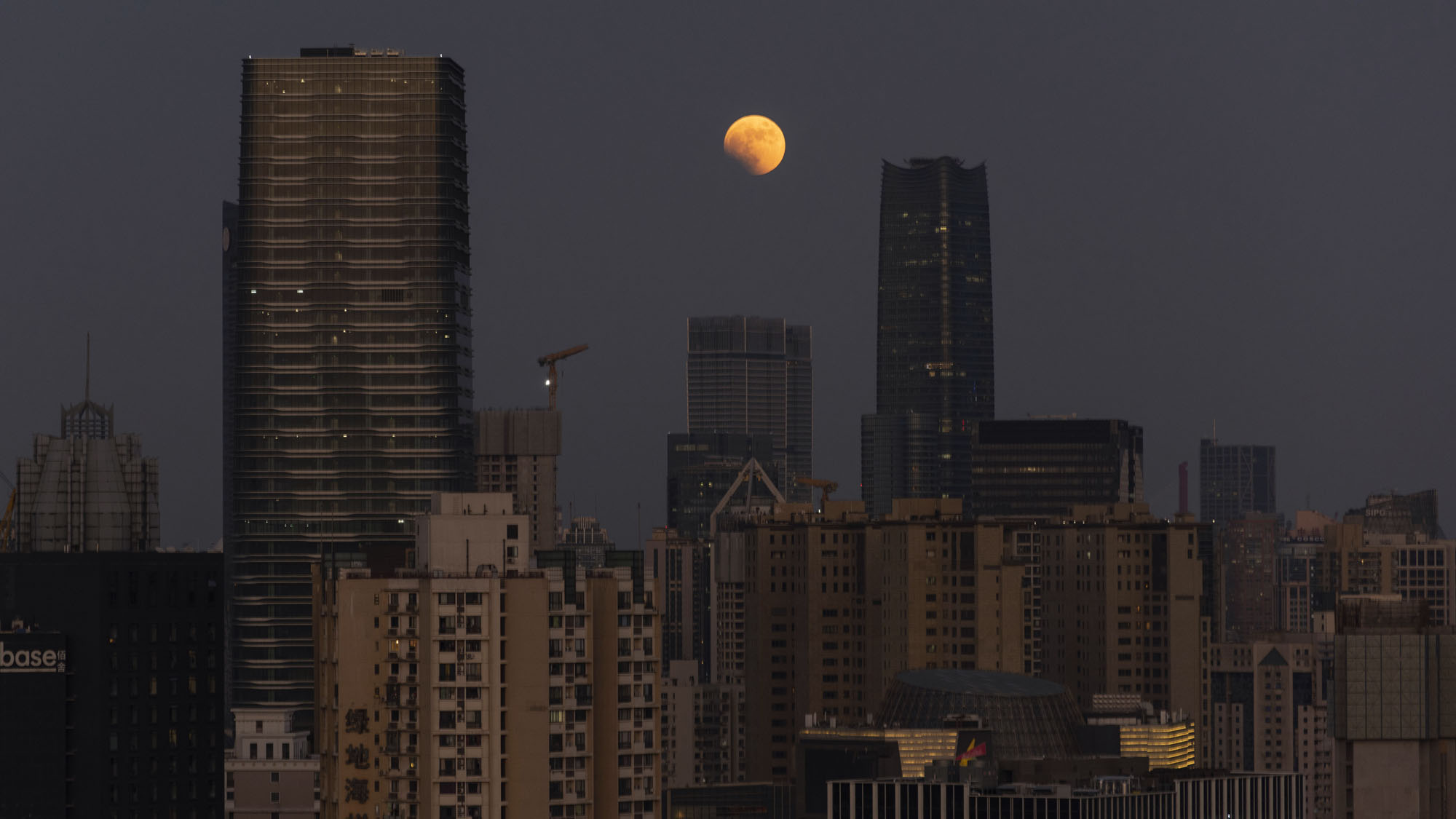
This photo shows a view of a partial lunar eclipse on Nov. 8 as it appeared in the evening over Shanghai, China.
The Nov. 8 Blood Moon lunar eclipse was visible as a partial lunar eclipse across wide swaths of the Western Hemisphere, a wider region than where the total phase of the eclipse was visible from. This image was provided to Getty Images by CFOTO/Future Publishing.
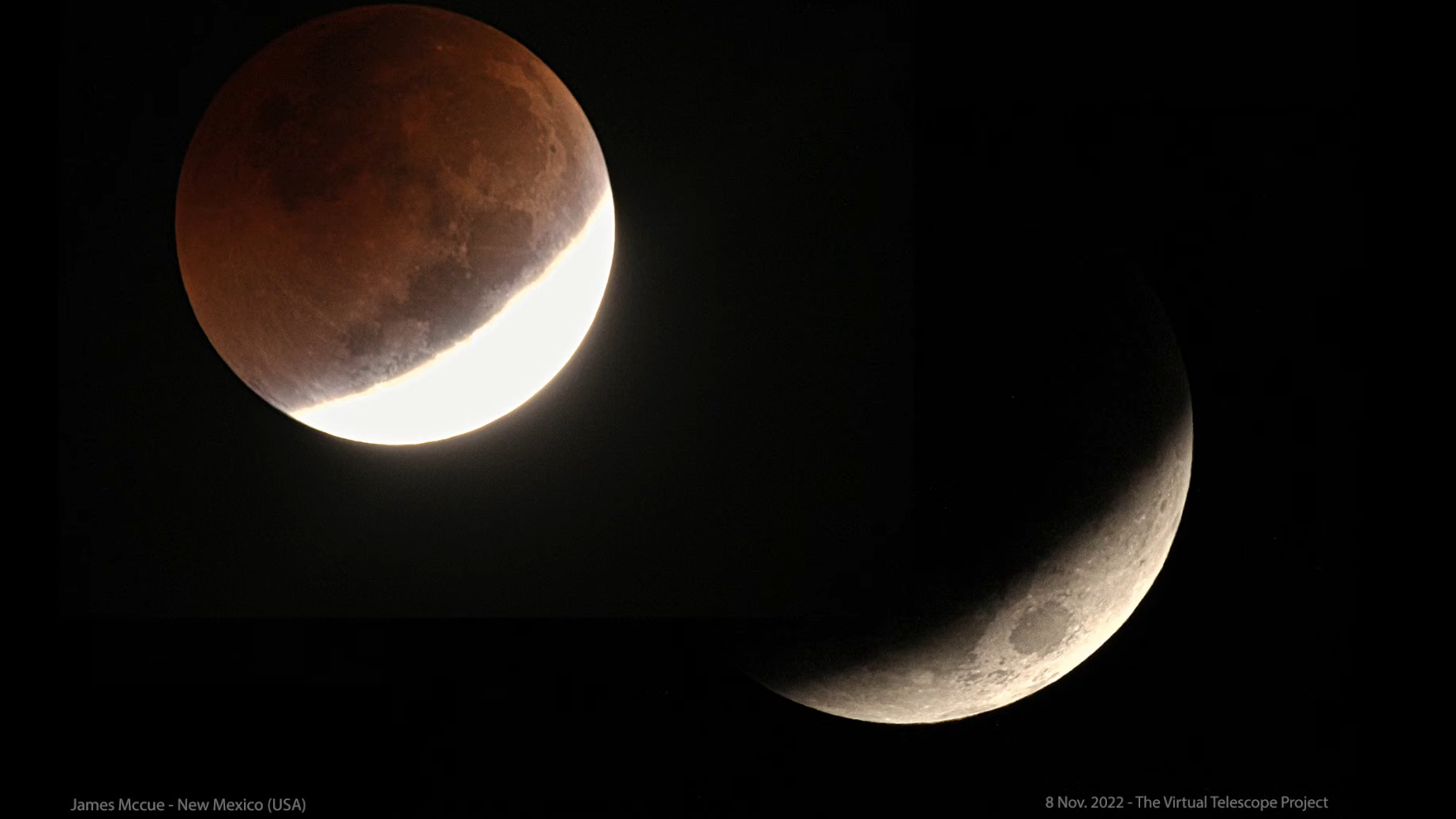
Skywatchers and astrophotographers around the world pooled their efforts to create seamless coverage of the Nov. 8 Beaver Blood Moon lunar eclipse.
These photos were taken by astrophotographer James McCue of New Mexico and shared with the Virtual Telescope Project in Ceccano, Italy, where astrophysicist Gianluca Masi provide live streaming views of the event.
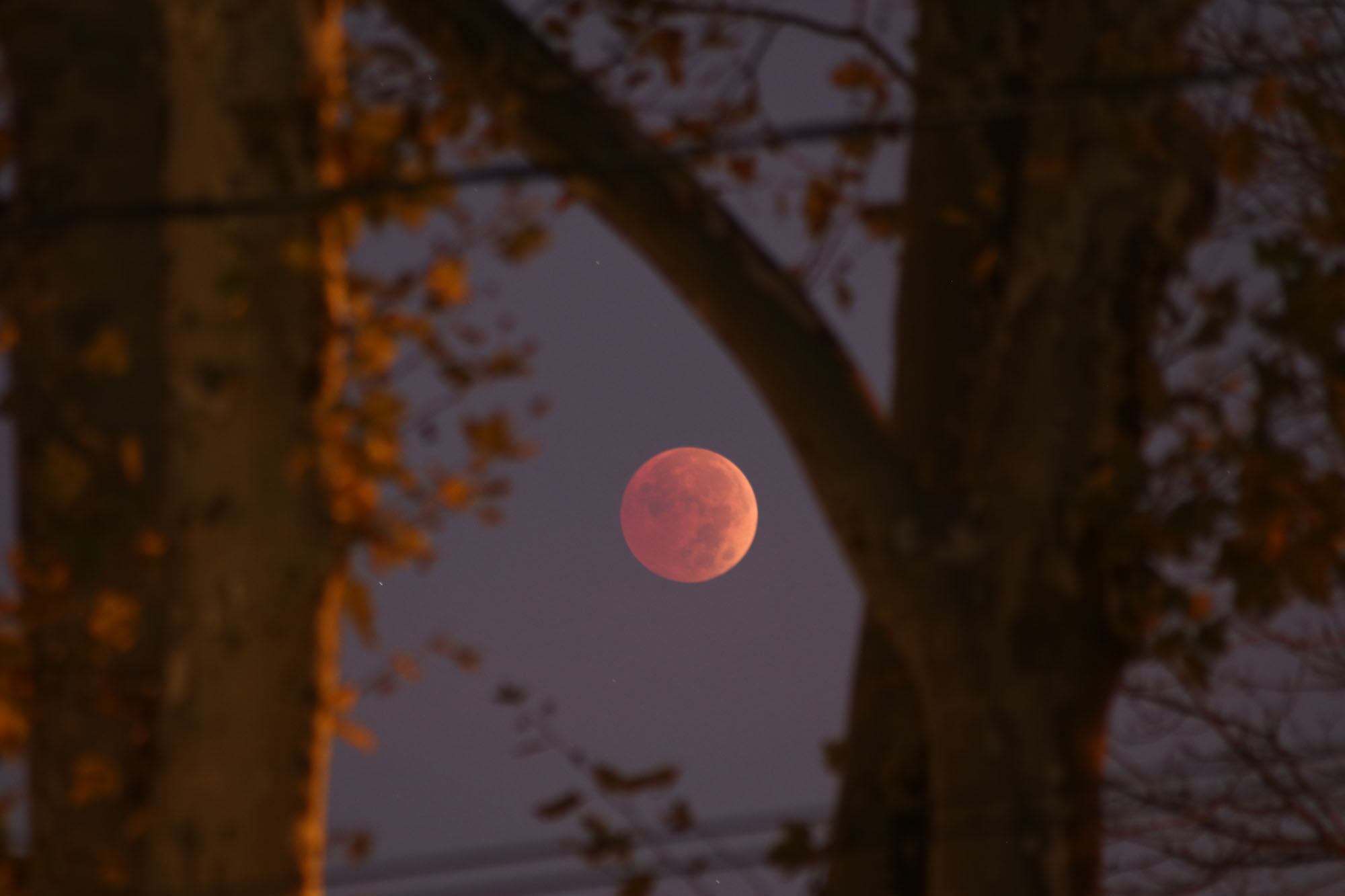
This stunning Blood Moon photo is awash in fall colors.
Photographer Islam Dogru of the Anadolou Agency and Getty Images captured this view of the Nov. 8 total lunar eclipse from New York City as the moon was viewed between two trees with their own reddish-orange leaves.
The Beaver Blood Moon lunar eclipse was the last lunar eclipse of 2022 and the last total lunar eclipse until March 2025.
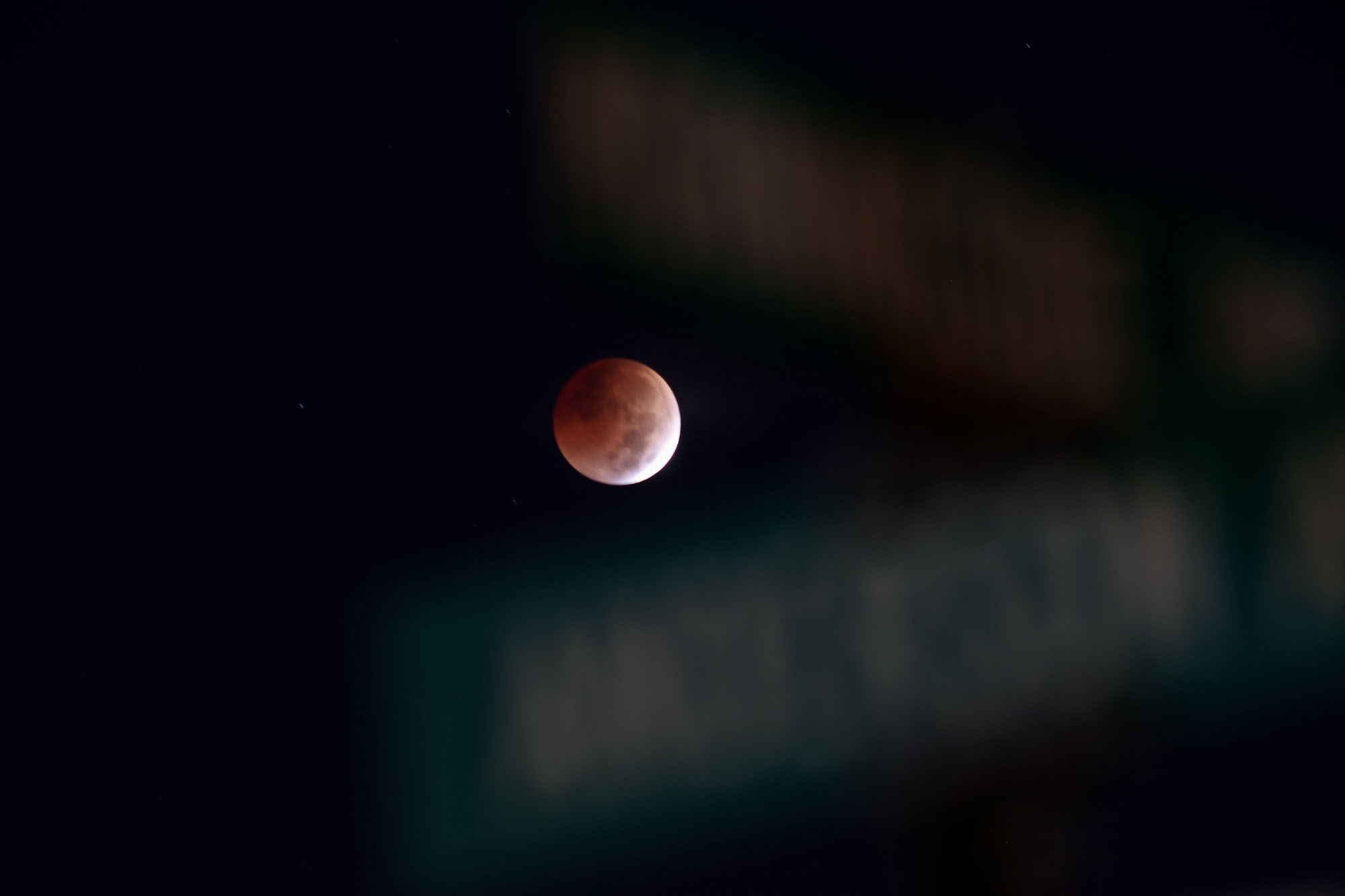
Photographer Islam Dogru of the Anadolou Agency and Getty Images captured this view of the Nov. 8 total lunar eclipse with the moon shining between two street signs in New York City.
At the time, the moon was in its totality phase of the hours-long lunar eclipse, which occurred before dawn on Nov. 8.
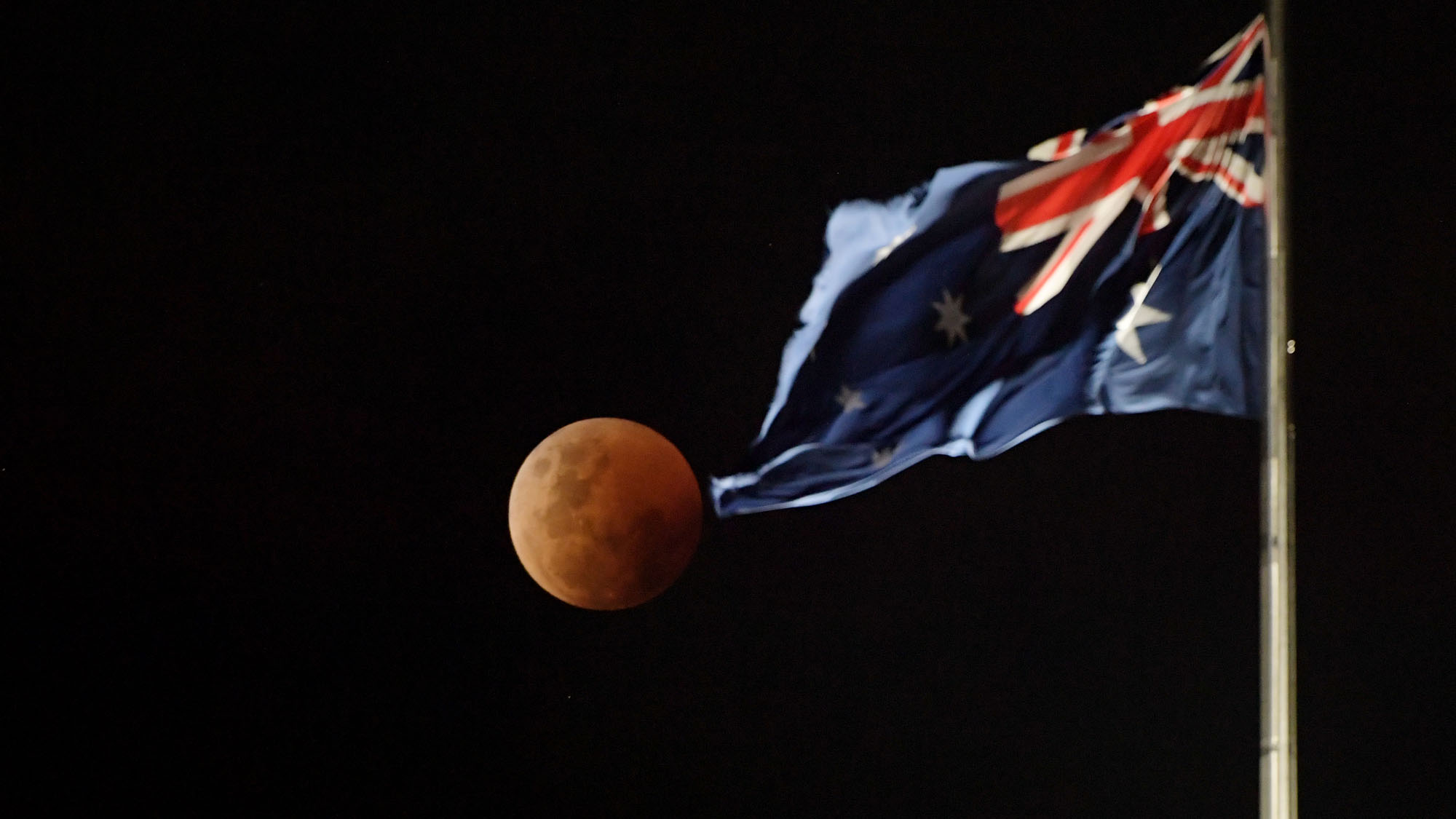
The full Blood Moon lunar eclipse rises over the Australian Parliament House on Nov. 8 in Canberra, Australia in this image taken by photographer Tracey Nearmy of Getty images.
In Australia, the lunar eclipse was visible in the evening of Nov. 8, while in North America, it occurred before dawn.
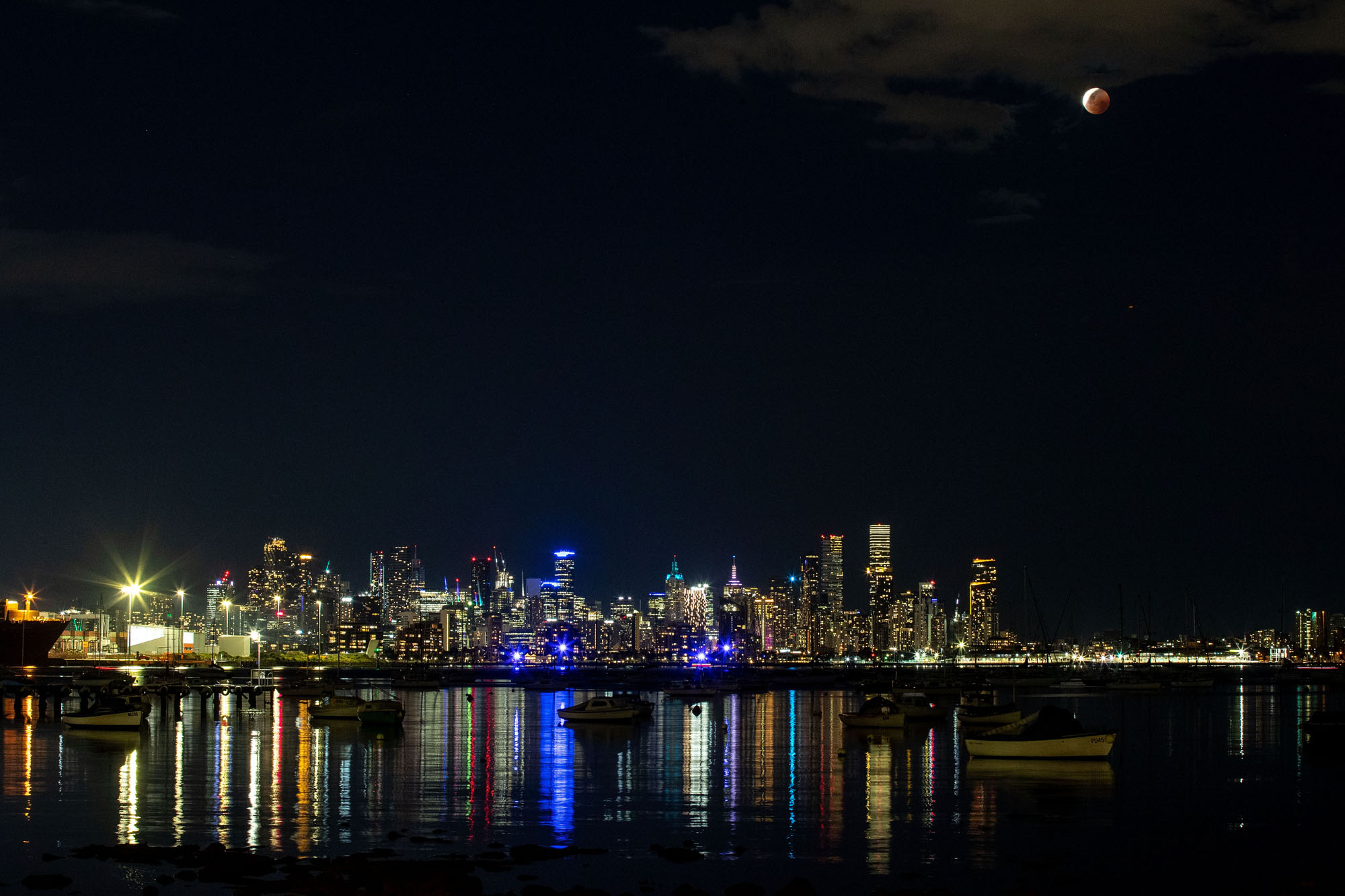
This view of the total lunar eclipse of Nov. 8 shows the eclipse moon above Melbourne, Australia as seen from the Williamstown area on Nov. 8.
This stunning photo of the nighttime city and moon was captured by photographer Darrian Traynor for Getty Images.
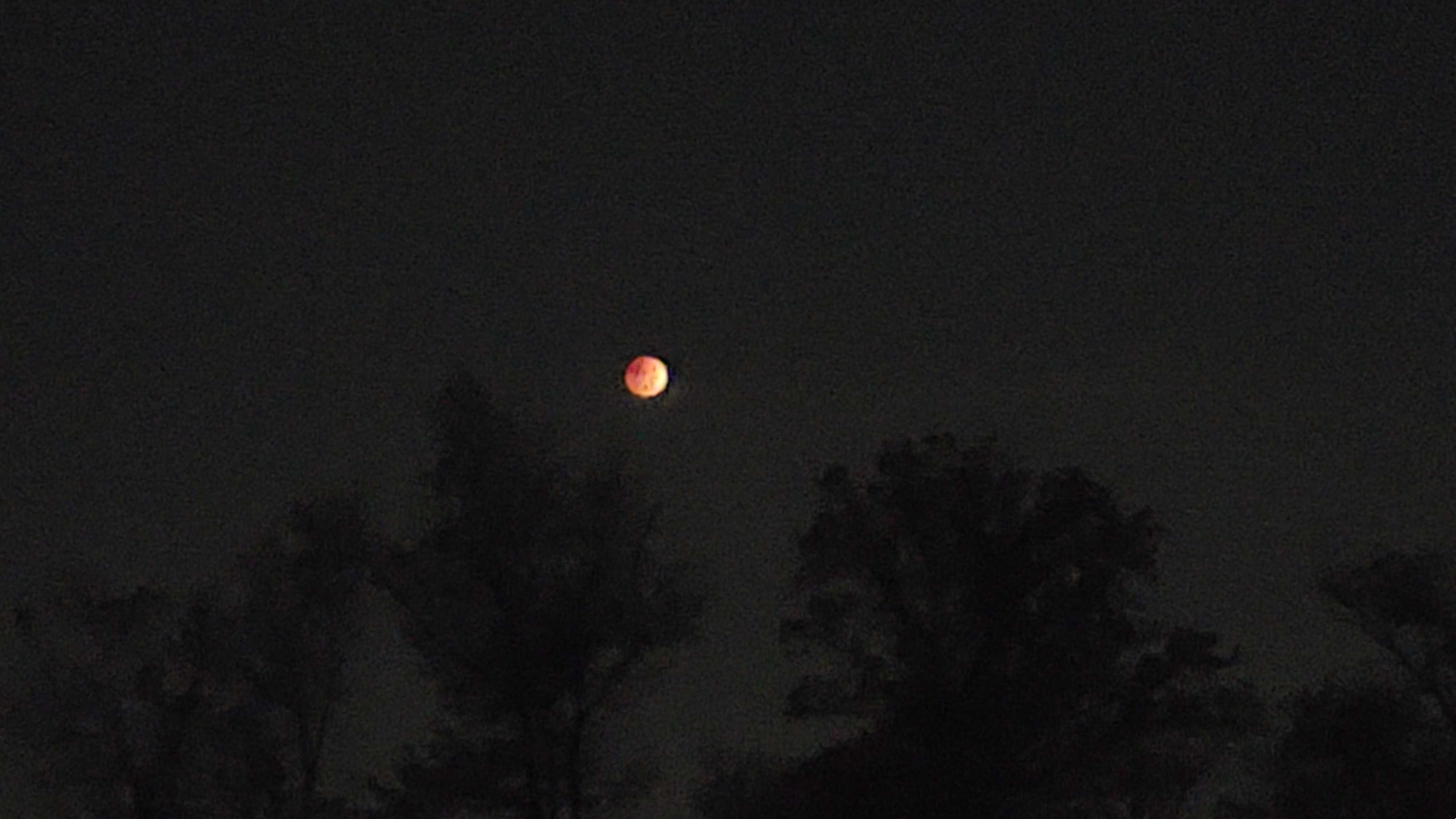
Space.com Editor-in-Chief Tariq Malik captured this image of the Nov. 8 total lunar eclipse from atop a small mountain in West Orange, New Jersey.
"In my neighborhood, the moon had set behind the mountain just at totality so we had to drive up to the top to try and get a glimpse," Malik said. "It was chilly and early, but worth it."
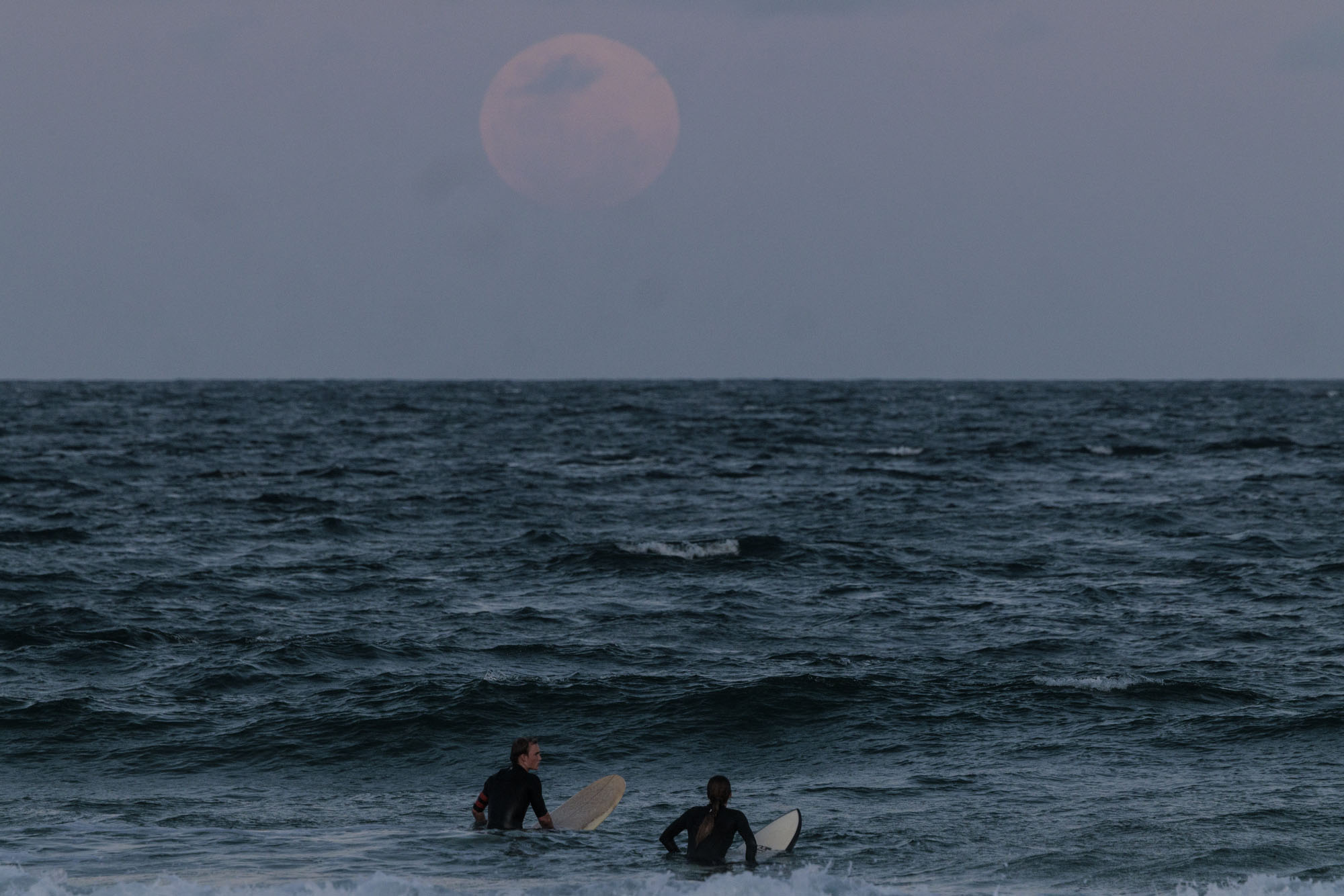
The Full Beaver Moon rises over Manly Beach in Sydney, Australia ahead of a total lunar eclipse on Nov. 8, 2022.
Here, photographer Brook Mitchell of Getty Images captured two surfers enjoying the waves as the moon shines one. The moon's gravitational effect on Earth creates the tides and waves that the surfers enjoy.
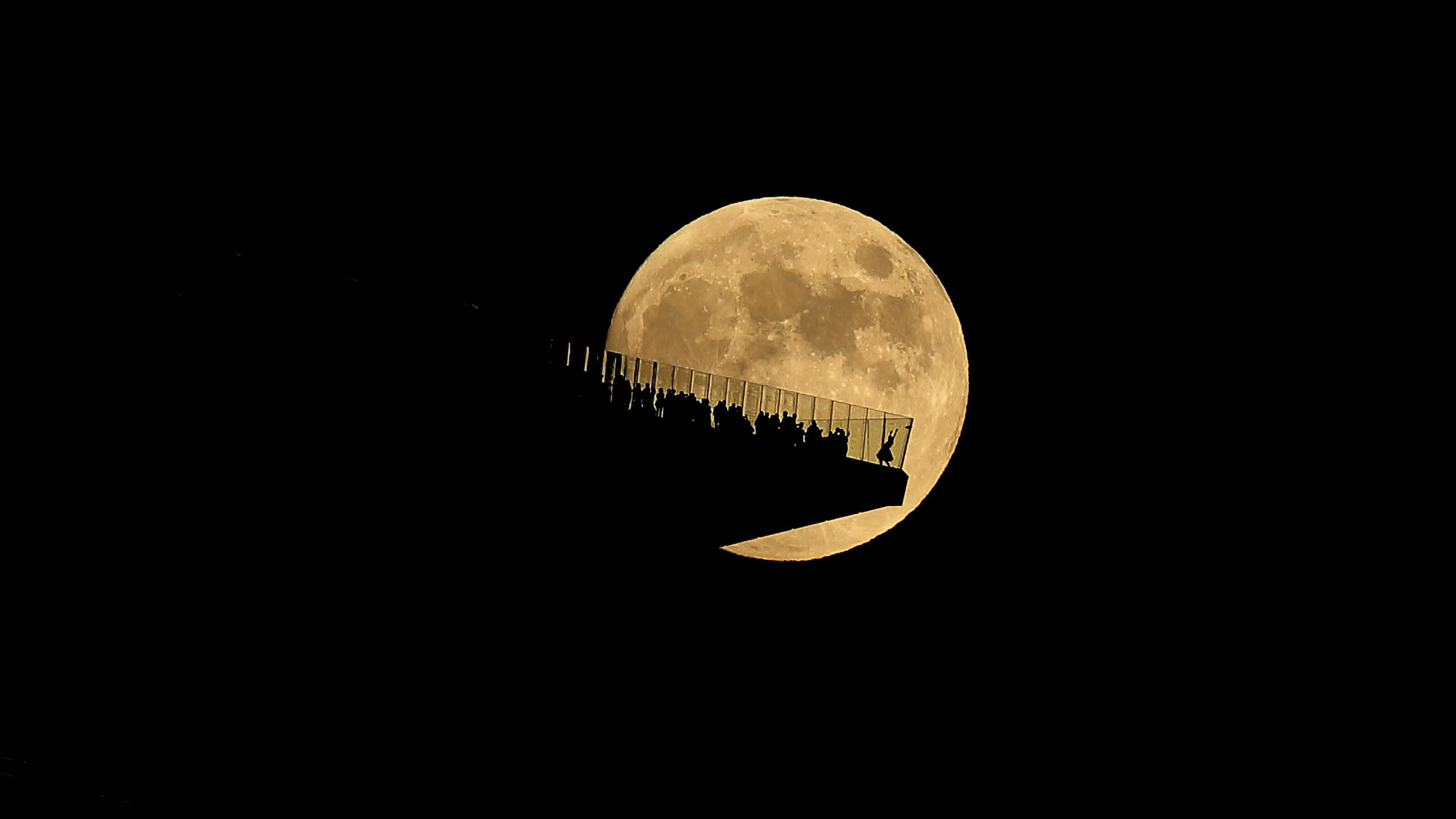
The Full Beaver Moon shines as skywatchers on the EdgeNYC observation deck look on Nov. 7, 2022, one day ahead of the last total lunar eclipse of the year.
The next total lunar eclipse will occur on March 14, 2025, but there will be two partial lunar eclipses in 2023 and two more in 2024.
If you're interested in planning your next lunar eclipse observing session, check out our lunar eclipse guide for the upcoming years.
If you want to photograph the moon or want to prepare your gear for the total lunar eclipse, check out our best cameras for astrophotography and best lenses for astrophotography. Read our guides on how to photograph a lunar eclipse, as well as how to photograph the moon with a camera for some helpful tips to plan out your lunar photo session.

Tariq is the award-winning Editor-in-Chief of Space.com and joined the team in 2001. He covers human spaceflight, as well as skywatching and entertainment. He became Space.com's Editor-in-Chief in 2019. Before joining Space.com, Tariq was a staff reporter for The Los Angeles Times covering education and city beats in La Habra, Fullerton and Huntington Beach. He's a recipient of the 2022 Harry Kolcum Award for excellence in space reporting and the 2025 Space Pioneer Award from the National Space Society. He is an Eagle Scout and Space Camp alum with journalism degrees from the USC and NYU. You can find Tariq at Space.com and as the co-host to the This Week In Space podcast on the TWiT network. To see his latest project, you can follow Tariq on Twitter @tariqjmalik.
